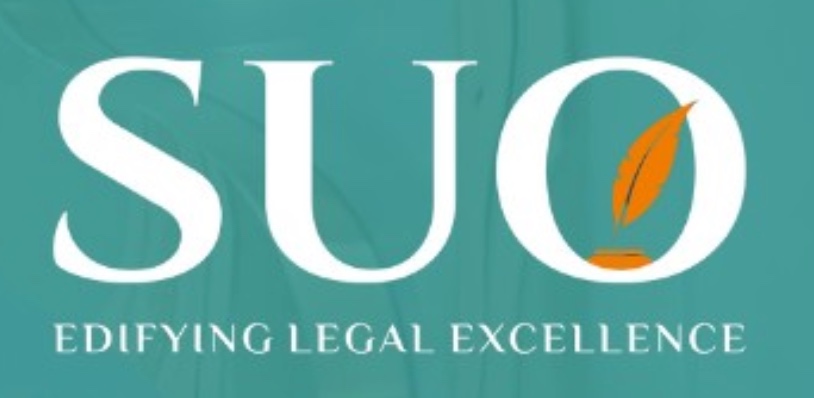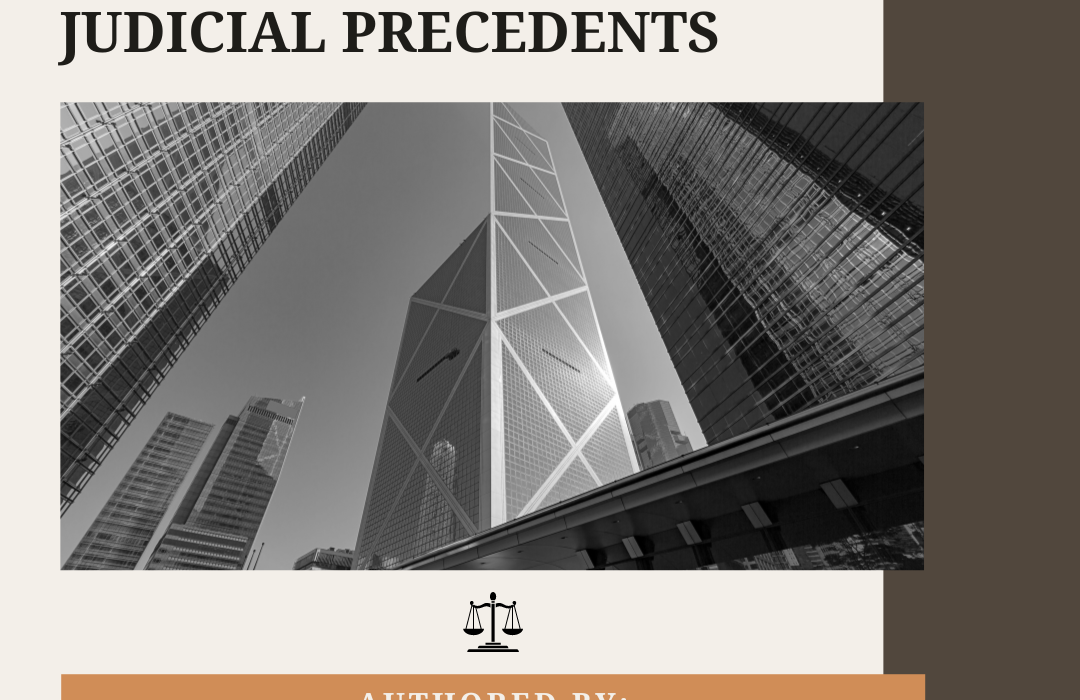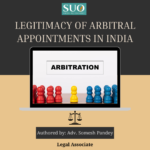LIFTING OF CORPORATE VEIL: NAVIGATING JUDICIAL PRECEDENTS
INTRODUCTION
Corporations have come to become one of the most significant parts of the modern world. The origin of company law in India can be traced back to the 1850s, with the Joint Stock Companies Act of 1850 being the first such legislation to be enforced. At present, the incorporation of a company, along with the subsequent compliances in the Indian landscape, is governed by the Companies Act of 2013. Perhaps, one of the most prominent aspects in this regard is the Doctrine of Lifting of Corporate Veil, which in turn finds its roots in the Theory of Separate Legal Personality. This theory bestows upon the company an identity of its own, which is separate from its directors, shareholders, or members in general. This article is an attempt to shed light on the concept of lifting the corporate veil, and the judicial precedents highlighting the conditions under which it may be lifted. However, before delving into this domain, it is crucial that we first understand the theory of separate legal personality.
SEPARATE LEGAL PERSONALITY VIS-A-VIS SALOMON v. SALOMON
To call the principle of separate legal personality the foundation of modern corporate jurisprudence would not be an exaggeration in the slightest. This theory finds its origins in the landmark case of Salomon v. Salomon, which to this date is widely celebrated and relied upon not just by English courts, but by courts across multiple jurisdictions. The issue raised in the present case was pertaining to the unsecured interests of creditors in light of the liquidation of Salomon Ltd, wherein Salomon was the majority shareholder. It was alleged that the company was a sham since it was merely an extension of Salomon. It was thus sought that he should be subjected to unlimited personal liability.
The Court of Appeal while holding Salomon personally liable, observed that since the incorporation of the company was done in contravention to the principles of the Companies Act, 1862, the company was a ‘myth’, and merely an agent of Salomon, employed to conduct business. Therefore, he would be made personally liable. However, an appeal was preferred before the House of Lords, who subsequently overturned the decision of the Court of Appeal. It was unanimously held that as the company was duly incorporated, it had its own rights and liabilities, along with the fact that “the motives of those who took part in the promotion of the company are absolutely irrelevant in discussing what those rights and liabilities are.” This case also ended up creating a “corporate veil” separating the company from its owners/ founders/ controllers. It further paved the way for multiple landmark judgments, including but not limited to Lee v. Lee Air Farming Ltd., Macaura v. Northern Insurance Co Ltd., etc.
GROUNDS FOR LIFTING OF CORPORATE VEIL
It is rather well known that the Theory of Separate Legal Personality is not absolute by its very nature, and courts have the authority to pierce the “corporate veil” to bring to light any malpractices being carried out by an individual/ group of individuals in the guise of a limited liability company. The principle laid down in Salomon has been reiterated at multiple junctures by the Indian judiciary. However, it is important to note herein that lifting of corporate veil is not a well-established principle in India, as the conditions under which the procedure can be initiated have not been crystallized under any existing statute. The Companies Act of 2013 deals with this doctrine in a rather indirect manner, through its provisions such as misstatement in prospectus (s. 34 and 35), fraudulent conduct of business (s. 339), fraudulent application for removal of name (s. 251), ultra vires acts, et al.
However, Munby J.’s judgment in Ben Hashem v. Al Shayef, an English law case, has cemented the principles for the lifting of corporate veil, which have been enumerated as follows:
- “Ownership and control of a company were not enough to justify piercing the corporate veil;
- The court cannot pierce the corporate veil, even in the absence of third-party interests in the company, merely because it is thought to be necessary in the interests of justice;
- The corporate veil can be pierced only if there is some impropriety;
- The impropriety in question must be linked to the use of the company structure to avoid or conceal liability;
- To justify piercing the corporate veil, there must be both control of the company by the wrongdoer(s) and impropriety, that is use or misuse of the company by them as a device or facade to conceal their wrongdoing; and
- The company may be a “facade” even though it was not originally incorporated with any deceptive intent, provided that it is being used for the purpose of deception at the time of the relevant transactions. The court would, however, pierce the corporate veil only so far as it was necessary in order to provide a remedy for the particular wrong which those controlling the company had done.”
It is significant to highlight herein that the lifting of the corporate veil is an exception, and not the norm. In certain cases where an individual/ group of individuals controls the day-to-day functioning of the company, it is viewed as an alter-ego of the individual(s). The court can then accordingly rely on statutory provisions or judicial precedents, depending on the facts and circumstances of the particular case. In Delhi Development Authority v. Skipper Construction Co. (P) Ltd., the Hon’ble Supreme Court of India noted that the concept of separate legal personality is meant to encourage and promote trade; not to commit illegalities and defraud people under the garb of a company. The relevant extract has been reproduced hereunder:
“28. The concept of corporate entity was evolved to encourage and promote trade and commerce but not to commit illegalities or to defraud people. Where, therefore, the corporate character is employed for the purpose of committing illegality or for defrauding others, the court would ignore the corporate character and will look at the reality behind the corporate veil so as to enable it to pass appropriate orders to do justice between the parties concerned. …”
THE JUDICIAL VIEW
The Indian judiciary has at multiple junctures during the last decade, upheld the principles established by English courts, viz. Salomon, and Ben Hashem cases, thus re-enforcing the theory of separate legal personality. It is significant to reiterate herein that the doctrine of corporate veil cannot be invoked arbitrarily, and is applied after great consideration and even greater caution. In light of the same, we shall now have a look at the instances wherein the judiciary decided against Lifting the Corporate Veil, thus upholding the Theory of Separate Legal Personality.
- Life Insurance Corporation of India v. Escorts Ltd.
The Hon’ble Supreme Court of India herein reiterated the Salomon principle and observed that only in certain exceptional circumstances shall the corporate veil be lifted by ignoring the corporate personality. Relevant excerpt from the said judgment has been reproduced hereunder:
“90. … Generally and broadly speaking, we may say that the corporate veil may be lifted where a statute itself contemplates lifting the veil, or fraud or improper conduct is intended to be prevented, or a taxing statute or a beneficial statute is sought to be evaded or where associated companies are inextricably connected as to be, in reality, part of one concern. It is neither necessary nor desirable to enumerate the classes of cases where lifting the veil is permissible since that must necessarily depend on the relevant statutory or other provisions, the object sought to be achieved, the impugned conduct, the involvement of the element of public interest, the effect on parties who may be affected, etc.”
- Balwant Rai Saluja v. Air India Ltd.
The Hon’ble Supreme Court of India held herein that the principle of lifting of corporate veil is an exception to the principle of separate legal entity and should be allowed to be applied in a very restrictive manner. It should be applied only in circumstances where it is evident that the company is merely a sham or has been created by the individual(s) for the sole purpose of evading personal liability. Relevant excerpt from the judgement has been reproduced hereunder:
“74. … The doctrine of piercing the veil allows the court to disregard the separate legal personality of a company and impose liability upon the persons exercising real control over the said company. However, this principle has been and should be applied in a restrictive manner, that is, only in scenarios wherein it is evident that the company was a mere camouflage or sham deliberately created by the persons exercising control over the said company for the purpose of avoiding liability. The intent of piercing the veil must be such that would seek to remedy a wrong done by the persons controlling the company. The application would thus depend upon the peculiar facts and circumstances of each case.”
- Sanuj Bathla v. Manu Maheshwari & Anr.
The Hon’ble Delhi High Court held herein that if fraud has been alleged, the same must be contested meticulously and in detail, and proven to the hilt. The relevant excerpt has been reproduced hereunder:
“19. It is also well settled that fraud, if alleged, must be pleaded meticulously and in detail and proved to the hilt. A mere assertion that fraud has been committed is neither here nor there. Precisely and in what manner fraud has been committed is required to be delineated by the party alleging the same if the plea of fraud is to be made the basis of a decree against the other party. Bald assertions and vague allegations will not be countenanced by the Courts. Rule 4 of Order VI specifically lays down that the particulars of the fraud alleged (with dates and items, if necessary) shall be stated in the plaint.”
Upon analyzing the aforementioned judgments, it is more than evident that the Honourable Courts have made conscious attempts to uphold the sanctity of the theory of separate legal personality, while also ensuring minimum detriment to public interest at large. Since there are no crystallized provisions of law governing the lifting of the corporate veil, courts have adopted a rather holistic approach in dealing with such cases, which in turn shows the meticulous examination of the facts and circumstances of the respective case.
CONCLUSION
It can therefore be seen that even though lifting of the corporate veil is an exception to the theory of separate legal personality, it is by no means sacrosanct. The metaphorical veil can, in exceptional circumstances, be lifted to reveal the masterminds behind the fraudulent conduct of the company. However, if there is no evident veil, courts must uphold the sanctity of the principle of separate legal personality of a company.
REFERENCES
- The Companies Act, 2013; [Act 18 of 2013]
- Salomon v. Salomon; [(1897) AC 22]
- Ben Hashem v. Al Shayef; [2009] EWHC 864 (Fam)
- Delhi Development Authority v. Skipper Construction Co. (P) Ltd.; [(1996) 4 SCC 622]
- Life Insurance Corporation of India v. Escorts Ltd.; [(1986) 1 SCC 264]
- Balwant Rai Saluja v. Air India Ltd.; [2014 SCC OnLine SC 638]
- Sanuj Bathla v. Manu Maheshwari &Anr.; [C.R.P. 166/2018 & CM APPL. 32378/2018 & 10441/2021]
Authored by: Adv. Priyamvada Lonial, Legal Associate, SUO Law



